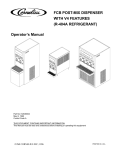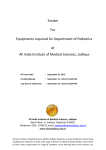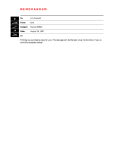Download Cornelius CM600 Owner`s manual
Transcript
IMI CORNELIUS INC g One Cornelius Place g Anoka, MN 55303-6234 Telephone (800) 238-3600 Facsimile (763) 422-3246 Installation/Owner’s Manual ICE MAKER (WM600 AND CM600) IMPORTANT: TO THE INSTALLER. It is the responsibility of the Installer to ensure that the water supply to the Ice Maker is provided with protection against backflow by an air gap as defined in ANSI/ASME A112. 1.2-1979; or an approved vacuum breaker or other such method as proved effective by test. Water pipe connections and fixtures directly connected to a potable water supply shall be sized, installed, and maintained according to Federal, State, and Local laws. Part No. 630460082 March 3, 2003 Revision: B THIS DOCUMENT CONTAINS IMPORTANT INFORMATION This Manual must be read and understood before installing or operating this equipment IMI CORNELIUS INC; 1998–2003 PRINTED IN U.S.A TABLE OF CONTENTS Page SPECIIFICATIONS . . . . . . . . . . . . . . . . . . . . . . . . . . . . . . . . . . . . . . . . . . . . . . . . . . . . . . . . . 3 DESCRIPTION . . . . . . . . . . . . . . . . . . . . . . . . . . . . . . . . . . . . . . . . . . . . . . . . . . . . . . . . . . . . 3 INSTALLATION INSTRUCTIONS . . . . . . . . . . . . . . . . . . . . . . . . . . . . . . . . . . . . . . . . . . . . 3 REMOVE ICE MAKER FROM CARTON: . . . . . . . . . . . . . . . . . . . . . . . . . . . . . . . . . 3 CABINET REMOVAL . . . . . . . . . . . . . . . . . . . . . . . . . . . . . . . . . . . . . . . . . . . . . . . . . . . 3 PREPARATION OF INSTALLATION SITE . . . . . . . . . . . . . . . . . . . . . . . . . . . . . . . . 3 WATER INLET HOOK–UP: . . . . . . . . . . . . . . . . . . . . . . . . . . . . . . . . . . . . . . . . . . . . . 4 ELECTRICAL SUPPLY . . . . . . . . . . . . . . . . . . . . . . . . . . . . . . . . . . . . . . . . . . . . . . . . . 4 AUGER ENGAGEMENT . . . . . . . . . . . . . . . . . . . . . . . . . . . . . . . . . . . . . . . . . . . . . . . 4 INITIAL START UP, CHECKS AND ADJUSTMENT INSTRUCTIONS . . . . . . . . . 5 GUIDE TO SERVICE . . . . . . . . . . . . . . . . . . . . . . . . . . . . . . . . . . . . . . . . . . . . . . . . . . . . . . . 6 ICE MAKER CLEANING AND SANITIZING PROCEDURES . . . . . . . . . . . . . . . . . 6 MAINTENANCE . . . . . . . . . . . . . . . . . . . . . . . . . . . . . . . . . . . . . . . . . . . . . . . . . . . . . . . 6 MONTHLY . . . . . . . . . . . . . . . . . . . . . . . . . . . . . . . . . . . . . . . . . . . . . . . . . . . . . . . . . . . 6 QUARTERLY . . . . . . . . . . . . . . . . . . . . . . . . . . . . . . . . . . . . . . . . . . . . . . . . . . . . . . . . 6 SEMI-ANNUALLY . . . . . . . . . . . . . . . . . . . . . . . . . . . . . . . . . . . . . . . . . . . . . . . . . . . . . 6 WATER LEVEL CONTROL . . . . . . . . . . . . . . . . . . . . . . . . . . . . . . . . . . . . . . . . . . . . . . 7 WATER LEVEL CONTROL OPERATION . . . . . . . . . . . . . . . . . . . . . . . . . . . . . . . . 7 PURPOSE OF WATER LEVEL CONTROL . . . . . . . . . . . . . . . . . . . . . . . . . . . . . . . 7 TO REPLACE WATER LEVEL CONTROL . . . . . . . . . . . . . . . . . . . . . . . . . . . . . . . 8 TO REPLACE WATER LEVEL SAFETY SWITCH . . . . . . . . . . . . . . . . . . . . . . . . . 8 ICE LEVEL CONTROL . . . . . . . . . . . . . . . . . . . . . . . . . . . . . . . . . . . . . . . . . . . . . . . . 8 REFRIGERATION SYSTEMS . . . . . . . . . . . . . . . . . . . . . . . . . . . . . . . . . . . . . . . . . . . . . . . 9 REFRIGERATION SYSTEM ADJUSTMENTS . . . . . . . . . . . . . . . . . . . . . . . . . . . . . 9 EXPANSION VALVE . . . . . . . . . . . . . . . . . . . . . . . . . . . . . . . . . . . . . . . . . . . . . . . . . . 9 ADJUSTMENT AND TROUBLESHOOTING . . . . . . . . . . . . . . . . . . . . . . . . . . . . . . . 9 ADJUSTMENT AND TROUBLESHOOTING . . . . . . . . . . . . . . . . . . . . . . . . . . . . . . 9 TEMPERATURE/PRESSURE CHART . . . . . . . . . . . . . . . . . . . . . . . . . . . . . . . . . . . . . . . . 10 CONDENSER MODULATING VALVE (WATER COOLED ONLY) . . . . . . . . . . . . 10 CONDENSER MODULATING VALVE REMOVAL . . . . . . . . . . . . . . . . . . . . . . . . . . 11 GEAR MOTOR . . . . . . . . . . . . . . . . . . . . . . . . . . . . . . . . . . . . . . . . . . . . . . . . . . . . . . . . 11 TROUBLESHOOTING . . . . . . . . . . . . . . . . . . . . . . . . . . . . . . . . . . . . . . . . . . . . . . . . . . . . . . 13 TROUBLESHOOTING GEAR MOTORS . . . . . . . . . . . . . . . . . . . . . . . . . . . . . . . . . . 13 THE GEARMOTOR WILL NOT RUN . . . . . . . . . . . . . . . . . . . . . . . . . . . . . . . . . . . . . 13 THE GEARMOTOR STARTS BUTS TRIPS REPEATEDLY ON THE OVERLOAD PROTECTOR . . . . . . . . . . . . . . . . . . . . . . . . . . . . . . . . . . . . . . . . . . . . . . 13 THE MOTOR RUNS BUT OUTPUT SHAFT DOES NOT ROTATE . . . . . . . . . . . . 13 OVERLOAD CHECK: . . . . . . . . . . . . . . . . . . . . . . . . . . . . . . . . . . . . . . . . . . . . . . . . . . . 13 MOTOR CHECK: . . . . . . . . . . . . . . . . . . . . . . . . . . . . . . . . . . . . . . . . . . . . . . . . . . . . . . 13 INSTALLATION AND SHAFT SEAL REPLACEMENT . . . . . . . . . . . . . . . . . . . . . . . 14 AUGER & EXTRUDING HEAD REMOVAL . . . . . . . . . . . . . . . . . . . . . . . . . . . . . . . . 15 TO REPLACE BEARINGS . . . . . . . . . . . . . . . . . . . . . . . . . . . . . . . . . . . . . . . . . . . . . . 15 TROUBLESHOOTING COMPRESSOR . . . . . . . . . . . . . . . . . . . . . . . . . . . . . . . . . . . 15 i 630460082 TABLE OF CONTENTS (cont’d) Page ELECTRICAL CHECKOUT . . . . . . . . . . . . . . . . . . . . . . . . . . . . . . . . . . . . . . . . . . . . . . 16 OVERLOAD CHECK . . . . . . . . . . . . . . . . . . . . . . . . . . . . . . . . . . . . . . . . . . . . . . . . . . . 16 COMPRESSOR CHECK . . . . . . . . . . . . . . . . . . . . . . . . . . . . . . . . . . . . . . . . . . . . . . . . 16 CAPACITOR CHECK . . . . . . . . . . . . . . . . . . . . . . . . . . . . . . . . . . . . . . . . . . . . . . . . . . . 16 SAFETY CONTROLS . . . . . . . . . . . . . . . . . . . . . . . . . . . . . . . . . . . . . . . . . . . . . . . . . . 17 GUIDE TO GOOD ICE . . . . . . . . . . . . . . . . . . . . . . . . . . . . . . . . . . . . . . . . . . . . . . . . . . . . . . 18 TROUBLESHOOTING CHART – ICEMAKER NOT OPERATING . . . . . . . . . . . . . . . . 19 WARRANTY . . . . . . . . . . . . . . . . . . . . . . . . . . . . . . . . . . . . . . . . . . . . . . . . . . . . . . . . . . . . . . 27 LIST OF FIGURES FIGURE 2. AUGER ASSEMBLY . . . . . . . . . . . . . . . . . . . . . . . . . . . . . . . . . . . . . . . . . 7 FIGURE 3. ADJUSTMENT SCREW . . . . . . . . . . . . . . . . . . . . . . . . . . . . . . . . . . . . . . 10 FIGURE 4. OUTPUT SHAFT . . . . . . . . . . . . . . . . . . . . . . . . . . . . . . . . . . . . . . . . . . . 13 FIGURE 5. SHAFT SEAL REPLACEMENT . . . . . . . . . . . . . . . . . . . . . . . . . . . . . . . 14 FIGURE 6. EXTRUDING HEAD . . . . . . . . . . . . . . . . . . . . . . . . . . . . . . . . . . . . . . . . . 14 FIGURE 7. AUGER . . . . . . . . . . . . . . . . . . . . . . . . . . . . . . . . . . . . . . . . . . . . . . . . . . . . 14 FIGURE 8. UPPER NUT AND BEARING . . . . . . . . . . . . . . . . . . . . . . . . . . . . . . . . . 15 FIGURE 9. ELECTRICAL BOX . . . . . . . . . . . . . . . . . . . . . . . . . . . . . . . . . . . . . . . . . . 16 FIGURE 10. GEAR MOTOR THERMAL OVERLOAD . . . . . . . . . . . . . . . . . . . . . . . 17 FIGURE 11. TROUBLESHOOTING CHART . . . . . . . . . . . . . . . . . . . . . . . . . . . . . . . 19 FIGURE 14. MOUNTING TEMPLATE . . . . . . . . . . . . . . . . . . . . . . . . . . . . . . . . . . . . 26 630460082 ii SAFETY INFORMATION Recognize Safety Information This is the safety-alert symbol. When you see this symbol on our machine or in this manual, be alert to the potentially of personal injury. Follow recommended precautions and safe operating practices. Understand Signal Words A signal word - DANGER, WARNING, OR CAUTION is used with the safety-alert symbol. DANGER identifies the most serious hazards. Safety signs with signal word DANGER or WARNING are typically near specific hazards. General precautions are listed on CAUTION safety signs. CAUTION also calls attention to safety messages in this manual. DANGER WARNING CAUTION Follow Safety Instructions Carefully read all safety messages in this manual and on your machine safety signs. Keep safety signs in good condition. Replace missing or damaged safety signs. Learn how to operate the machine and how to use the controls properly. Do not let anyone operate the machine without instructions. Keep your machine in proper working condition. Unauthorized modifications to the machine may impair function and/or safety and affect the machine life. CAUTION: Very high discharges pressure is present in system. Quick disconnects on your gages will minimize danger and loss of refrigerant. CAUTION: Unit requires separate electrical line. See instruction manual for proper fuse size. WARNING: There must be adequate clearance around ice maker. Allow minimum 6” air intake and 4” air exhaust for air exhaust and panel removal. NOTE: Unit must be installed per local plumbing and electrical codes. See Installation manual for unit requirements. Failure to do so may cause damage to unit, which would void unit warranty. NOTE: Using any parts other than genuine factory manufactured parts relieves the manufacturer of all liability. NOTE: Manufacturer reserves the right to change specifications at any time. 1 630460082 THIS PAGE LEFT BLANK INTENTIONALLY 630460082 2 SPECIIFICATIONS Model WM (Wall Model) 600 and CM (Counter Model) 600 Compressor 3/4 H.P. (R404 Refrigerant) Voltage 115 VAC, 60 Hz, Single Phase Current Draw 16 Amps Circuit Breaker or Fuse Size 20 Amp Maximum Time Delay DESCRIPTION Models WM600 and CM600 Ice Makers are self-contained wall mount and counter style Units which automatically make hard compressed-style ice and store it in a sealed hopper for sanitary dispensing. INSTALLATION INSTRUCTIONS IMPORTANT: An Everpure Model 9320–42 Systems IV Model DB900 ice maker quality water treatment unit MUST BE INSTALLED in the water supply line to the Ice Maker. Failure to do so may result in poor quality ice, low production output, and may cause premature failure of the Ice Maker evaporator and void the extended evaporator warranty. This Ice Maker is provided with a stainless–steel evaporator designed to last the life of the product. But, some of the chemicals in treated and untreated water, specifically chlorine and sulphur (sulphide), have the ability to attack stainless–steel and cause premature failure. An initial investment in proper water treatment will pay for itself in increased production, quality, and long life of the product. REMOVE ICE MAKER FROM CARTON: 1. Keep Unit in the upright position, remove carton and pallet from the Unit and inspect the unit for damage. Upon inspection of the unit, if any damage is found, file a claim with the carrier immediately. 2. Locate the Startup Card either on the outside of the container or on the plastic liner. Fill in the proper information and send one copy to the factory and the other copy to the Distributor. The postage is prepaid. CABINET REMOVAL 1. Unscrew and remove the front panels for electrical and start–up access. 2. Remove shipping tape from the storage hopper cover and the agitator in storage hopper. PREPARATION OF INSTALLATION SITE 1. For maximum efficiency and ice output, select a location for your ice maker where it will not be exposed to sunlight, excessive heat or reflected radiation (preferably in a room with a temperature of 70° F to 80° F). The icemaker normally will not function properly in temperatures below 65° F. The area surrounding the ice maker should be well ventilated. (Consult Figure ???? for proper airflow clearance). WM600 – Two (2) mounting brackets are supplied for securing the Unit to a wall. CM600 – Consult Figure 1B and 1C for dimensions for mounting the Unit to the counter. Note that the Unit must be level for proper operation. 2. The Unit must be sealed to the counter. Locate the desired position for the Unit, then mark the outline dimensions on the counter. 3 630460082 3. Apply a continuous bead of NSF listed silastic sealant (Dow 732 or equal) approximately 1/4–inch inside of the Unit outline dimensions. Then, position the Unit on the counter within the outline dimensions. All excess sealant must be wiped away immediately. IMPORTANT: The WM600 with a full ice storage hopper weighs 450 pounds. Make sure that the mounting surface is adequately reinforced to support this weight. The mounting hole dimensions for the brackets are shown in Figure 1A. Use these dimensions to locate the Unit at the desired height on the wall. IMPORTANT: Provide support for the Unit until all eight (8)–mounting bolts are installed. Do not hang the Unit from the top mounting angle bracket only while installing the lower angle. WATER INLET HOOK–UP: 1. Water Inlet – The fitting is a 1/4”–in. compression fitting located at the bottom of the Unit. Connect water supply with a 1/4–inch or larger copper or flexible tubing. 2. Water Pressure – Unless otherwise specified, the Unit is designed to operate on a water pressures between 10 P.S.I. and 90 P.S.I. (NOTE: for pressures above 90 P.S.I; a water pressure regulator must be installed). 3. Water Cooled Condensers – The inlet uses a 3/8–inch compression fitting. Use a separate 3/8–inch or larger water line. 4. Filter Conditioners are recommended on supply lines to the Ice Makers. Never run the water supply to the water cooled condenser through a Filter/Conditioner. It uses up the cartridge unnecessarily and a saturated cartridge can starve the Ice Maker causing premature component damage. Separate water supplies are recommended. WM600 – Connect a 1–1/4 inch IPS (or equal) drain line to the1–1/4 inch diameter P–trap at the lower bottom of the Unit. The line must pitch downward to an open drain and must contain no traps or improper drainage will result. CM600 – Connect two (2) 3/4–inch IPS (or equal) drain lines to the 3/4–inch threaded drain connections at the lower rear of the Unit. These lines must pitch downward to an open drain and must contain no traps or improper drainage will result. For water–cooled Units, a third 3/4–inch FPT drain fitting is provided for the condenser drain (see Figure 1B). NOTE: The Unit must be installed per local plumbing codes. ELECTRICAL SUPPLY 1. Power Access – Is provided by way of a 7/8–inch diameter hole located on the lower left side of the Unit. Route incoming power in conduit, to the Ice Maker electrical control box. Make connections to wires provided in the control box and the ground lug/screw. 2. Fused Line – Should be a dedicated circuit checked and sized according to the electrical rating shown on the Unit nameplate. NOTE: The Unit must be installed per local electrical codes. AUGER ENGAGEMENT Be certain that the auger is fully engaged to the lower drive and that the extruding head is fully engaged to the evaporator. 630460082 4 INITIAL START UP, CHECKS AND ADJUSTMENT INSTRUCTIONS NOTE: Do not start the Unit before completing the previous Installation steps. Turn on the water supply and main power switch (located on top of the electrical box). NOTE: If the Unit will not start, be sure the water reservoir is full. The low water safety control must be properly adjusted to start and shut down the Unit. If the water level drops below the bottom of the reservoir, the Unit must shut down. Adjustment is made by moving the magnet up or down. FIGURE 1. FLOAT ADJUSTMENT Water Level Control Adjustment – If necessary, adjust the float by bending the float arm up or down as needed. Push the float assembly down until the Unit stops running. Release the float and the Unit will restart. Keep water in the reservoir at the level line while the Unit is in operation (See Figure 1). Low Water Safety Control – Adjust the magnet by bending the magnet arm as shown in Figure 1 to shut down the Unit if the water level drops below the line on the side of the reservoir. Bin Control – Remove four clips from top of the bin cover and lift cover so the bin control switch can be manually lifted until the Unit shuts down. Release the plate and unit will restart Dispense Switch and Mechanism – By depressing the dispense switch, the dispense mechanism door on the storage bin will open, and the agitator will rotate counterclockwise. NOTE: If any of these checks or adjustments cannot be achieved, refer to Troubleshooting Section of this manual or call our Technical Support Center for assistance. 5 630460082 GUIDE TO SERVICE IMPORTANT: Prventive maintenance can increase the trouble-free life of your Ice Maker. Failure to perform preventive maintenance could void your equipment warranty. ICE MAKER CLEANING AND SANITIZING PROCEDURES IMPORTANT: Do not use any of the ice made during cleaning operations. Clean and sanitize ice storage area when cleaning Ice Maker. 1. Turn Ice Maker off. 2. Shut off water supply. 3. Remove ice from storage bin. 4. Mix approved cleaner (2 gallons as directed). Recommended cleaner: Calgon Corp. or Virginia Chemicals, ice machine cleaner. Mixture: 3–1/3 ounces per gallon water. Do not use nickel safe cleaners. 5. Turn Ice Maker on and add cleaner solution to water level control (float reservoir) until 2 gallons have been used. 6. Turn on water supply and operate Ice Maker for 15 minutes. 7. Turn Ice Maker off. Remove and discard all ice. 8. Sanitize using household liquid bleach (50 ppm chlorine). Mixture: 1 fluid ounce per gallon room temperature water. Allow a two minute exposure time. 9. Sanitize pre–cleaned inside areas of storage bin liner, door frame, door, as well as all exposed surfaces of the evaporator assembly and the bin shutoff assembly with sanitizing solution. Allow to air dry. MAINTENANCE Preventative Maintenance can increase the trouble-free life of your Ice Maker. Many Authorized IMI Service Agencies offer service contracts. Contact your local distributor for further information. MONTHLY 1. Clean the condenser coil. Use a brush, vacuum cleaner, or blow from inside the coil with air or CO2 gas. 2. Inspect the water feed reservoir at least once a month until a definite pattern for cleaning and sanitizing has been established. QUARTERLY This is the maximum period of time between cleaning and sanitizing the Ice Maker. In addition to recommended monthly procedure, and if a more frequent cleaning and sanitizing pattern has not been established, the Ice Maker must be cleaned and sanitized quarterly. SEMI-ANNUALLY Semi-annually, in addition to all previously established service procedures, perform the following: 1. Check for water leaks; tube connections, water fittings, and the lower icemaker water seal. 630460082 6 2. Check the drain tubes for clogs and ”aged” tubes. Replace if tubes are stained or brittle. FIGURE 2. AUGER ASSEMBLY 3. Check for signs of condensation. Clean where necessary and replace insulation properly. 4. Check safety circuits for proper operation. 5. Check refrigeration system (see REFRIGERATION SYSTEMS section of this manual). 6. Check Unit for abnormal noise. Tighten machine and cabinet screws, if necessary. 7. Check white upper bearings on auger assembly (see Figure 2). If bearing are less than 1/16-inch thick, replace the bearings. WATER LEVEL CONTROL WATER LEVEL CONTROL OPERATION When water is introduced through the inlet fitting, the float rises (see Figure 1). The float pushes against a lever that in turn, forces the poppet assembly against the inlet fitting valve seat that seals the water off. Before the water inlet is sealed, the safety switch is operated. In the event of a water failure, the float would drop down and operate the safety switch to shut off the Unit. If water level control will not shut off and seal at level as indicated, be sure inlet pressure does not exceed recommended factory operating range. Under ordinary circumstances, the water level control adjustment should not be necessary providing the control was properly adjusted when the Unit was installed or relocated (see “Water Level Control Adjustment ” in “INSTALLATION INSTRUCTIONS” SECTION of this manual). If however, the water level control becomes inoperative, repair or replace the control. PURPOSE OF WATER LEVEL CONTROL 1. To automatically maintain the proper water level in the evaporator when the Unit is operating and making ice. 2. A safety switch is operated in the event of an interruption in the water supply.The switch shuts off the electrical power to the Ice Maker and it’s refrigeration system. The switch will reset as soon as the cause of the water failure has been corrected and the proper water level in the Ice Maker has again been reached. 3. The transparent bowl not only provides a visible check of the water level, but also is a good guide to the internal conditions which exist within the Ice Maker assembly itself (see cleaning procedure). 7 630460082 TO REPLACE WATER LEVEL CONTROL 1. Shut off the water supply. Shut off the main power switch or unplug the Ice Maker from electrical outlet. 2. Remove flexible tubing from bottom of the water level control, then drain water from the water level control and evaporator. 3. Remove flexible tubing at bottom of the water level bowl connected to the overflow. 4. Hold water inlet fitting with proper tool to prevent it from rotating when disconnecting the water inlet. 5. Remove wing nut holding the water control to its mounting bracket. The control can be removed by lifting it straight up. TO REPLACE WATER LEVEL SAFETY SWITCH 1. Shut off main power switch or unplug the Ice Maker from electrical outlet. 2. Unplug Molex connector connecting switch to the electrical box. 3. Remove two screws anchoring the water level safety switch to the bottom of the water level control mounting bracket. ICE LEVEL CONTROL The ice level control assembly is secured to the top of the ice storage container cover. When the switch assembly is down, due to lack of ice in the ice storage container, an electrical impulse is sent to the compressor to start the ice making cycle. As ice level increases in the ice storage container, the switch assembly is pushed back. When the ice storage container is full, it de-actuates the switch which stops the compressor and the ice making cycle. 630460082 8 REFRIGERATION SYSTEMS REFRIGERATION SYSTEM ADJUSTMENTS A complete understanding of the Ice Maker and the hermetic refrigeration system is necessary before any adjustments are made. The refrigeration technician must use high and low side pressure readings, water and air temperatures, plus general conditions of cleanliness to assess the refrigeration system status when making any adjustments. All Ice Maker products are tested and adjusted at the factory prior to shipment where the ambient temperature ranges from 65° F to 90° F, depending on the season of the year. Whenever a new Ice Maker is initially installed and started, it is imperative that the start-up operator make the following checks and readjustments for local conditions. EXPANSION VALVE You will find a thermal expansion valve on IMI Ice Makers, which is used to control the amount of refrigerant flowing through the evaporator. Improperly installed or defective expansion valves may cause low production, soft ice, squeaking from evaporator, and excessive load inside the evaporator. By using the general refrigeration trouble shooting along with the pressure charts, you can easily determine whether or not the expansion valve is working properly. ADJUSTMENT AND TROUBLESHOOTING ADJUSTMENT AND TROUBLESHOOTING When troubleshooting the expansion valve, you must: 1. Be sure you have adequate water flowing into the evaporator, a clean and properly ventilated condenser, and the system is properly charged and free of any restrictions. Also be sure compressor is operating properly. 2. Take reservoir water temperature and air temperature from the condenser inlet and determine at what pressure the Ice Maker should be operating. On Ice Makers equipped with a thermostatic valve, there is NO adjustment. If the correct pressure cannot be obtained, be sure the system has time to stabilize (10–15 minutes). 3. Be sure the sensing bulb is located at the outlet side of the evaporator (about 3–4 inches away from the evaporator) and be sure to insulate well and clamp tightly to tubing. If the system pressures are still not adequate, take second water and air temperature reading and go over other parts of the system for possible problems. If proper refrigerant charge is questionable, evacuate the refrigeration system and recharge to nameplate specifications. Leak check the refrigeration system. If the expansion valve still malfunctions replace the valve. Use general refrigeration system practices when replacing and recharging the unit. After new valve is in place, go through previous monitored adjustments and troubleshooting to be sure valve is functioning properly. NOTE: On water-cooled Units, adjust the condenser modulating valve before troubleshooting the expansion valve. CAUTION: Very high discharge pressure is present in the refrigeration system. Quick disconnects on your gages will minimize Danger and loss of refrigerant. Comply with federal regulations for reclaiming refrigerant. 9 630460082 TEMPERATURE/PRESSURE CHART + 10 LB REFRIGERANT TYPE R404A DISCHARGE PRESSURE WATER TEMPERATURE AIR TEMPERATURE 40 65 90 50– 174 177 180 60– 202 205 208 70– 230 233 236 80– 265 269 272 90– 300 304 307 100– 328 334 340 NOTE: The thermostatic expansion valve is non-adjustable on all models CONDENSER MODULATING VALVE (Water Cooled Only) The reason for using a water modulating valve is to supply the correct amount of water to the condenser to maintain the proper operating pressure in the refrigeration system high side. The flow of water through the valve is increased as the high side pressure rises and decreases as high side pressure lowers. FIGURE 3. ADJUSTMENT SCREW To calibrate the amount of water flow with the refrigeration system high side pressure, turn adjustment screw located on end of the valve opposite the bellows (see Figure 3). Turn adjustment screw counterclockwise to raise opening point. Opening point of valve should be set to maintain proper operating pressure in refrigeration system high side. Refer to TEMPERATURE/PRESSURE CHART. Closing point of valve should be set low enough to close valve during compressor stand by periods. 630460082 10 NOTE: Cold water will absorb more heat faster than warm water. The water flow will therefore automatically increase as inlet temperature increases. CONDENSER MODULATING VALVE REMOVAL 1. Disconnect power to unit, shut off water supply to condenser, then reclaim refrigerant from system. 2. Remove inlet water line from Condenser modulating Valve. Also remove tube from refrigerant high side line. 3. Remove Condenser Modulating Valve and bracket from unit. 4. Remove valve from bracket. 5. Replace Condenser Modulating Valve by reversing Steps 2 thru 4, then pull system into vacuum. 6. Recharge unit with refrigerant per nameplate. 7. Turn power and water on to the unit. 8. With unit operating, adjust modulating valve to proper setting. 9. Go through a complete system check. GEAR MOTOR The gear motor is equipped with a start relay and a manual reset overload. When current is applied, the relay energizes and completes the circuit to the start winding. The motor reaches a predetermined speed and the relay drops out, disconnecting the start winding. The run winding remains in the circuit as long as current is applied. The purpose of the overload is to automatically shut off the motor in the event of a mechanical bind of the transmission, an overload condition within the evaporator, or an electrical malfunction. It does this by sensing amperage draw. If the motor stalls the start relay would energize and stay energized. The amperage would surge to 5 to 6 times greater than normal draw. In this event, the overload would shut off the transmission in 4 to 8 seconds. If the motor is subjected to an abnormal load, but does not reach stall condition, the overload will react, but over a greater period of time. The reaction time depends upon the amperage to which it is subjected. The overload, through the safety circuit, also shuts off the compressor. Refer to Troubleshooting Guide. 11 630460082 THIS PAGE LEFT BLANK INTENTIONALLY 630460082 12 TROUBLESHOOTING IMPORTANT: Only qualified personnel should service internal components or electrical wiring. TROUBLESHOOTING GEAR MOTORS Basically, Gear motor problems can be narrowed down to three areas of checkout. THE GEARMOTOR WILL NOT RUN 1. No voltage to the transmission terminals – check external circuit. 2. Low voltage – check voltage supply. 3. Problems in the gear motor electrical circuit. See Figure 4 THE GEARMOTOR STARTS BUTS TRIPS REPEATEDLY ON THE OVERLOAD PROTECTOR 1. Voltage – high or low voltage can cause the overload to trip. 2. High Gear motor amperage draw, see Specification Chart for ratings and Troubleshooting Guide. FIGURE 4. OUTPUT SHAFT THE MOTOR RUNS BUT OUTPUT SHAFT DOES NOT ROTATE Replace defective gear motor. CAUTION: Be sure unit is disconnected from the power source. Disconnect the transmission cable. OVERLOAD CHECK: 1. Allow motor to cool and reset overload if necessary. 2. Remove motor end bell and stator, if necessary. 3. Check terminals 1 and 3 on overload. No continuity replace overload. Use a volt–ohm meter. See Figures 4 and 5. MOTOR CHECK: The resistance readings on the windings will be between 5 to 25 ohms. A meter capable of these low readings must be used. The Start Relay cover must be removed. NOTE: Gear motor and related components can be checked from Pin Connector. See Figures 5 and 6. 630460082 13 If no continuity on start or run winding test, replace stator. If continuity on grounded motor test, replace stator. INSTALLATION AND SHAFT SEAL REPLACEMENT (See Figure 5) 1. Place shaft seal locator seat over gear motor output shaft, embossed side down, and push down until shaft seal seat rests flush on top of gear motor. 2. Place rubber coated ceramic seal (important: ceramic face up) over output shaft and push down until seal rests on top of the shaft seal seat. (Lubricate rubber on ceramic seal with [#06195] rubber lubricant.) 3. Place shaft seal with carbon face down(spring up) over output shaft and push (gently) downward until seal rests on carbon face of the output shaft seal. 4. Push down on the washer compressing the spring on the output shaft seal. While holding the seals (down) in place slide the E–ring into the groove on the output shaft. AUGER NUT E–RING BEARING DELRIN BEARING NYLON WASHER, PLAIN FLAT SHAFT SEAL GROOVE EXTRUDING HEAD MOUNT, SHAFT SEAL SEAT, SHAFT SEAL ANTI–ROTATION RIB– 3 PLACES AUGER FIGURE 6. EXTRUDING HEAD “D” DRIVE GEARMOTOR FIGURE 5. SHAFT SEAL REPLACEMENT 630460082 FIGURE 7. AUGER 14 AUGER & EXTRUDING HEAD REMOVAL FIGURE 8. UPPER NUT AND BEARING The upper bearings located on top of the auger is used to absorb the force between the auger and extruding head. The bearings are 3/32” thick. When they wear below 1/16” they should be replaced. Bearings to be inspected for wear during quarterly maintenance. See Figure 8. TO REPLACE BEARINGS 1. Dispense all ice from unit. 2. Disconnect unit from electrical power. 3. Remove panels. 4. Unplug Dispense Motor and Ice Level Switch. 5. Remove four screws holding dispense cover in place. 6. Remove dispense cover assembly. 7. Use an open end wrench on auger nut connected to bearing and turn counterclockwise to remove assembly. 8. Remove worn bearings. Replace with new bearings and then reinstall assembly. NOTE: If auger turns with nut, remove cover on top of gear motor stator and hold rotor while loosening nut. 9. Reconnect power to icemaker. TROUBLESHOOTING COMPRESSOR Basically the compressor problems can be narrowed down to three areas of checkout– 1. THE COMPRESSOR WILL NOT RUN A. No voltage to the compressor terminals – check circuit. B. Low voltage – below 90% of nameplate rated voltage. C. Problems in the compressor electrical circuit. See Electrical Checkout instructions. 2. THE COMPRESSOR STARTS BUT TRIPS REPEATEDLY ON THE OVERLOAD PROTECTOR A. Check for proper fan operation and clean condenser. B. Check the compressor suction and discharge pressures. 15 630460082 C. Voltage – The voltage should be within 10% of the rated nameplate voltage. D. High compressor amperage draw, it should never exceed 120% of the rated nameplate amperage. See Electrical Checkout Instructions. 3. THE COMPRESSOR RUNS BUT WILL NOT REFRIGERATE A. Check the compressor suction and discharge pressures. See TEMPERATURE/PRESSURE CHART. ELECTRICAL CHECKOUT FIGURE 9. ELECTRICAL BOX 1. Be sure the unit is disconnected from the power source. Remove the compressor electrical box cover. Check for obvious damage and loose wires. 2. Disconnect the fan motor leads. Since capacitors store energy, short the capacitor with a screwdriver. This will prevent shocks. 3. Disconnect the compressor terminal wires. OVERLOAD CHECK (See Figure 4) 4. Using a volt–ohm meter check the continuity across the overload, contacts #1 & #3. If none, wait for unit to cool down and try again. If still no continuity, the overload protector is defective and should be replaced. COMPRESSOR CHECK (See Figure 9) The resistance readings on the windings will be between 0.25 and 10.00 ohms, a meter capable of these low readings must be used. 5. Check between ”C” & ”R.” Replace compressor if there is no continuity as the run windings are open. 6. Check between ”C” & ”S.” Replace the compressor if there is no continuity as the start windings are open. 7. Check between ”C” & ”R”, or ”S” and shell of the compressor. If there is continuity replace the compressor as the motor is grounded. 8. Check between screw terminal on the overload and ”C” on the compressor. Check and repair the lead or connections if there is no continuity. CAPACITOR CHECK 9. Check or replace start capacitor, disconnect bleed resistor before checking for shorted capacitor. 630460082 16 10. Check or replace run capacitor (if supplied) check or shorted capacitor or either terminal grounded to case. SAFETY CONTROLS FIGURE 10. GEAR MOTOR THERMAL OVERLOAD Your Icemaker unit has several safety and control devices incorporated into its design. WARNING: None of the below described devices should ever be ”bypassed” to allow the unit to function. The safety and control system shut–off devices are: 1. Low water shut off reed switch located in icemaker float assembly. (Automatic reset type). 2. Gear motor thermal overload, manual reset type (red button on motor). See Figure 10. 3. Compressor thermal overload, automatic reset type. 4. Main service switch located on top of the control box. 5. Hopper shut–off. 6. High pressure cut out (water cooled only). WARNING: Do not reset gear motor overload if ice is present in the evaporator. 17 630460082 GUIDE TO GOOD ICE CUSTOMER COMMENTS It runs but the ice is too soft. The icemaker is not producing enought ice. The ice is too wet. CHECK ICEMAKER LOCATION CONDITIONS FIRST Under compression Proper air flow for condensing system Location too close to high temp units such as coffee urns, deepfryers, grills etc. Supply water conditions. Water too warm (above 90_F) CHECK ICEMAKER Use gages for checking suction and head pressures. See manual for correct reading and conditions. Check water level for proper adjustment and restrictions. See Manual. Check evaporator assembly for worn parts, bearings, scored evaporator and, bad expansion valve, etc. Water artificially softened above 262 PPM sodium chloride. Normal water supply too high. It makes too much noise. (with this comment the ice is usually extremely hard and larger thant normal). Over Compression Check to see if noise objection objections is normal fan and Check fan and fan shroud. air flow noise. Water supply conditions. Water too cold (below 50_F) (Possibly running from Pre-cooler). 630460082 Obstructions partially blocking ice exit from top of evaporator. 18 Check for loose parts and screws rattling. Check evaporator assembly for worn parts, bearings, scored evaporator and auger, bad expansion valve etc. TROUBLESHOOTING CHART – ICEMAKER NOT OPERATING ICEMAKER RUNS BUT DOES NOT MAKE ICE NO POWER LOW WATER SAFTEY SWITCH OPEN –Check bin switch –Check to see if ice control plate moves freely Condenser fan runiing but compressor not running –Check electrical wiring in control box for loose connections –Check for failed service switch or relay –Check power to machine –Check line voltage –Check compressor winding & components –Check that wateris turned on –Check for restriction in water line –Check incoming water pressure (minimum 10 lbs.) –Check water saftey switch Evaporator water tube may have an air bubble. Clear air bubble from tube High suction pressure (30 lbs. or above) Non–condensibles in system Too much refrigerant in system 19 Evacuate and recharge system. Clean condenser Low on refrigerant Check for leaks Condenser fan not running Condenser dirty or restricted Plugged liquid line dryer Replace drier. Evacuate and recharge system TXV bulb lost charge Valve stuck open Bulb loose Bulb uninsulated Replace valve evacuate and recharge Restricted liquid line Plugged or faulty TXV Icemaker froze up Check for kinks or damage to liquid line Replace valve evacuate and recharge system Check if auger is turning Check drive on gearmotor Refer to ”Guide to Good Ice” in Service manual GEARMOTOR OVERLOAD TRIPPED Check water level control and evaporator water tube for lime build up restriction No CAUTION Clear ice from evaporator and auger before resetting overload Yes CLEAN See instructions Reset overload Icemaker runs IMPORTANT Icemaker runs when reset but problem has not been found. Continue checking for overload as follows to guard against future problems Short run trips again in 2 minutes. Check gearmotor circuit Resets but motor does not run Check gearmotor circuit Will not reset Overload hot try again Will not reset replace overload OVERLOAD GUIDE ELECTRICAL: – High or low voltage Weak power lines can cause overloads on icemaker restarts – High running current. Check motor circuits and start relay – Auger delay failed ICEMAKER: – Mechanical parts worn. Scored evaporator or auger. Worn thrust bearing – Ice maker not turning off. Failed ice level control – Over compession. Low water inlet temperature. Restriction in water line from reservior REFRIGERANT: – Contaminated charge or bad compressor. – Low charge or gas leak – Low suction pressure. Improper expansion valve sensing bulb location or insulation and/or defective expansion valve No Check gears in gearbox No Low suction presure (20 lbs. or below) Suction line not insulated Clean and insulate – Check bin switch – Check to see if ice control plate moves freely Clean all related drain lines TXV not operating properly Clean and tighten ICEMAKER OPERATING BUT – Soft ice – Poor dispensing Yes Head pressure high Replace valve – Check electrical circuit to fan motor – Check fan motor STORAGE CONTAINER BIN SWITCH OPEN Check if extruding head is down in evaporator tube 630460082 FIGURE 11. TROUBLESHOOTING CHART 630460082 20 FIGURE 12. WIRING DIAGRAM 67 66 47 19 20 18 21 17 58 1 61 2 59 69 70 64 29 30 28 27 22 59 67 68 26 23 58 60 25 71 59 24 21 630460082 37 38 39 36 33 40 82 85 74 35 51 34 84 83 72 88 86 81 89 41 76 52 87 73 59 32 49 57 91 90 95 92 94 93 45 75 44 43 14 2 42 48 14 1 630460082 50 22 WM600 AND CM600 ICEMAKER Item No. Part No. Item No. Name Part No. Name 1 630000542 Hopper, Cabinet 45 22476 Spring Retainer, Gate 2 164005002 Rivet 46 40532 Fitting, 1/4-Bulkhead (Not Shown) 3 630000520 Rail, Front (Not Shown) 47 630000499 Base, Bottom 4 50806 Gasket, Motor (Not Shown) 48 630300267 Cable Ass’y, Bin Switch 5 50454 Seal, Motor Shaft (Not Shown) 49 630300266 Cable Ass’y, Dispense Mechanism 6 70341 Spring, Hopper Gate Slide (Not Shown) 50 630300268 Cable Ass’y, Motor 7 30794 Heater, Agitator Motor (Not Shown) 51 165697004 Label, Service Valve 8 630000512 Agitator Motor, 115V (Not Shown) 52 161903003 Label, Refrigeration Charge 9 638036296 Clamp 53 165294000 10 25860 Bracket, Agitator Motor (Not Shown) Machine Screw, 1/4-20 By 1-In. Long (Not Shown) 11 25835 Angle, Wall Mounting (Not Shown) 54 164153001 Hex Nut, 1/4-20 (Not Shown) 12 40914 Fitting, Drain, Drip Tray (Not Shown) 55 164154000 Washer, .312 I.D. (Not Shown) 13 630200585 Panel, Bottom (Not Shown) 56 94100 Wood, 1-In. By 2-In. (Not Shown) 57 638011531 Safety Wire Ass’y 58 63803110001 Fastener 59 00857 Machine Screw, Phil Truss Hd, No. 8-32 By 3/8-In. Long 60 07667 Machine Screw, Phil Truss Hd, No. 8-32 By 1/2-In. Long 14 638006070 Tube, Clear, .375 I.D. 15 25929R Drain Pan Ass’y (Not Shown) 16 169189004 Tubing, PVC (Not Shown) 17 168121001 Sleeve, .163 O.D. 18 50095 Tubing, .250 O.D. 19 630900490 Ice Chute 61 35852 Nut, No. 10-32 20 638008837 Gasket, Ice Chute 62 08387 21 630000521 Wrap, Upper Machine Screw, Phil Truss Hd, No. 10-32 By 1/2-In. Long (Not Shown) 22 51785 Extension, Ice Chute 63 311462000 Machine Screw, Hex Hd, No. 5/16-18 By 1/2-In. Long (Not Shown) 23 26083 Adapter Plate 64 01051 Hex Nut, No. 10-24 24 52105 Insulation, Cabinet 65 168833005 Washer, .204 I.D. (Not Shown) 25 25922R Panel, Utilities 66 63800705108 26 25849R Wrap, Utilitiy Screw, Phil Hd, No. 10-32 By 5/8-In. Long 27 630300265 Wire Harness, Electrical Box 67 23981 Hex Nut, No. 10-32 28 03611 Bushing 68 165073000 Washer, .203 I.D. 29 52104 Insulation, Wrapper 69 63800720103 Nut, No. 8-32 30 25861 Agitator Ass’y 70 638000845 Washer 71 161173000 Machine Screw, Knurled, No. 8-32 By 1/2-In. Long 72 630900030 Machine Screw, Hex Hd, No. 5/16-18 By 3/4-In. Long 73 63800797201 Screw, No. 10 74 165384000 Sheet Metal Screw, Hex Hd, No. 8 By 1/2-In. Long 75 03535 Sheet Metal Screw, Sl Phil Hd, No. 10-By 1/4-In. Long 76 161168005 Thread Cutting Screw, Hex Hd, No. 8-32 By 1/2-In. Long 31 169071002 Gasket, PVC (Not Shown) 32 630200605 Brace 33 630200557 Tube Drop 34 638036087 Clamp, Dispense Tray 35 638036869001 Tray, Foam Dispense Ass’y 36 638036865 Cover Ass’y, Dispense Tray 37 638090211 Auger Nut Ass’y 38 638090220 Bearing, Delrin 39 638090219 Bearing, Nylon 40 638090217 Head Extruder Ass’y 77 638030580 Insulation Tape (Not Shown) 41 638090213 Auger 78 169225016 Tubing, Insulation (Not Shown) 42 51891 Gasket, Gate 79 169225013 Tubing, Insulation (Not Shown) 43 53015 Ice Chute 80 70260 44 53016 Cover, Ice Chute Machine Screw, Phil Rd Hd, 1/4-20 By 1-In. Long (Not Shown) 81 63801148001 Cable, Compressor 23 630460082 WM600 AND CM600 ICEMAKER Item No. Part No. Item No. Name Part No. Name 82 638090236 Motor Fan Ass’y, 115V 93 638031003 Capacitor, Run 83 638096723 Fan Blade 94 638031498 Auger, Delay 84 638036273 Condenser, Air Cool 95 638090052 Relay 85 638090635 Shroud, Condenser 96 25815 Panel, Front (Not Shown) 86 638090221 Compressor, 115V 97 26250 Top Panel (Not Shown) 87 161165008 Capacitor, Start 98 31570 Actuator Dispense Switch (Not Shown) 88 638090222 Relay, 115V 99 33690 Actuator Rod (Not Shown) 89 638090223 Capacitor, Run, 115V 60HZ 100 40916 Fitting, Drain Trap (Not Shown) 90 30894 Switch, Red Button 101 630000502 Cover, Hopper 91 630900489 Timer, Agitator 102 630200555 Cover, Electrical Box (Not Shown) 92 638004791 Switch, Toggle 103 630200560 Cover, Electrical Box, Compressor (Not Shown) 630460082 24 15 14 16 11 10 9 8 7 12 4 3 5 6 1 2 FIGURE 13. FRONT END ASSEMBLY EXPLODED VIEW AND PARTS LIST Item No. 1 Part No. Item No. Name Part No. Name 638090050 Gearmotor Assembly, 115V 9 630000505 Evaporator Assembly 638090001 Gearmotor, 115V 10 638090213 Auger 2 638090215 Shaft Seal Mount 11 638090217 Extruding Head WCC 3 638090051 Shaft Seal 638090218 Extruding Head WCF 4 638007301030 Washer, Lower 12 638090226 Expansion Valve, Thermal 5 638090053 E-Ring 13 6 638090216 Shaft Seal Seat 14 638090211 Auger Nut 7 168833000 Washer, Lock 1/4 Split 15 638090219 Bearing Nylon 8 161179001 Screw 1/4-20 x 3/4 Lg. HHMS 16 638090220 Bearing Delrin 25 Item No. Not Used 630460082 FIGURE 14. MOUNTING TEMPLATE 630460082 26 WARRANTY IMI Cornelius Inc. warrants that all equipment and parts are free from defects in material and workmanship under normal use and service. For a copy of the warranty applicable to your Cornelius, Remcor or Wilshire product, in your country, please write, fax or telephone the IMI Cornelius office nearest you. Please provide the equipment model number, serial number and the date of purchase. IMI Cornelius Offices AUSTRALIA D P.O. 210, D RIVERWOOD, D NSW 2210, AUSTRALIA D (61) 2 533 3122 D FAX (61) 2 534 2166 AUSTRIA D AM LANGEN FELDE 32 D A-1222 D VIENNA, AUSTRIA D (43) 1 233 520 D FAX (43) 1-2335-2930 BELGIUM D BOSKAPELLEI 122 D B-2930 BRAASCHAAT, BELGIUM D (32) 3 664 0552 D FAX (32) 3 665 2307 BRAZIL D RUA ITAOCARA 97 D TOMAS COELHO D RIO DE JANEIRO, BRAZIL D (55) 21 591 7150 D FAX (55) 21 593 1829 ENGLAND D TYTHING ROAD ALCESTER D WARWICKSHIRE, B49 6 EU, ENGLAND D (44) 789 763 101 D FAX (44) 789 763 644 FRANCE D 71 ROUTE DE ST. DENIS D F-95170 DEUIL LA BARRE D PARIS, FRANCE D (33) 1 34 28 6200 D FAX (33) 1 34 28 6201 GERMANY D CARL LEVERKUS STRASSE 15 D D-4018 LANGENFELD, GERMANY D (49) 2173 7930 D FAX (49) 2173 77 438 GREECE D 488 MESSOGION AVENUE D AGIA PARASKEVI D 153 42 D ATHENS, GREECE D (30) 1 600 1073 D FAX (30) 1 601 2491 HONG KONG D 1104 TAIKOTSUI CENTRE D 11-15 KOK CHEUNG ST D TAIKOKTSUE, HONG KONG D (852) 789 9882 D FAX (852) 391 6222 ITALY D VIA PELLIZZARI 11 D 1-20059 D VIMARCATE, ITALY D (39) 39 608 0817 D FAX (39) 39 608 0814 NEW ZEALAND D 20 LANSFORD CRES. D P.O. BOX 19-044 AVONDALE D AUCKLAND 7, NEW ZEALAND D (64) 9 8200 357 D FAX (64) 9 8200 361 SINGAPORE D 16 TUAS STREET D SINGAPORE 2263 D (65) 862 5542 D FAX (65) 862 5604 SPAIN D POLIGONO INDUSTRAIL D RIERA DEL FONOLLAR D E-08830 SANT BOI DE LLOBREGAT D BARCELONA, SPAIN D (34) 3 640 2839 D FAX (34) 3 654 3379 USA D ONE CORNELIUS PLACE D ANOKA, MINNESOTA D (763) 421-6120 D FAX (763) 422-3255 LD004 4/21/98 27 630460082 IMI CORNELIUS INC. CORPORATE HEADQUARTERS: One Cornelius Place Anoka, Minnesota 55303-6234 (612) 421-6120 (800) 238-3600
































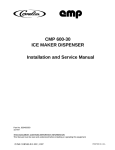
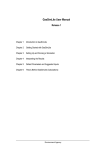
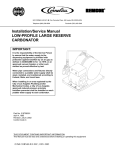
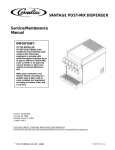
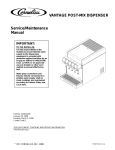
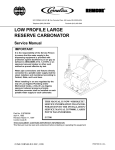
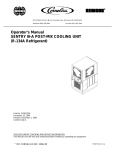
![Service Manual VA13 Carbonator [ 002818 ]](http://vs1.manualzilla.com/store/data/006013608_1-0f8f87056a0ab013b1dd01dac3912d47-150x150.png)
